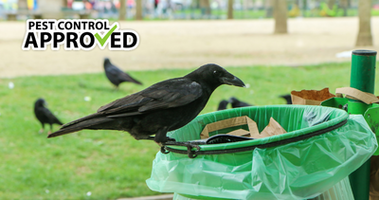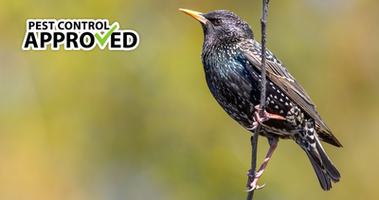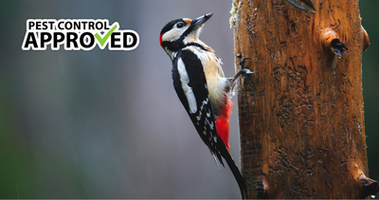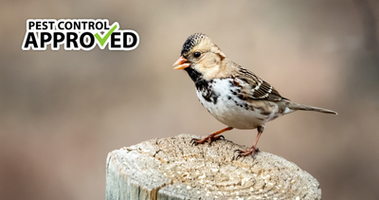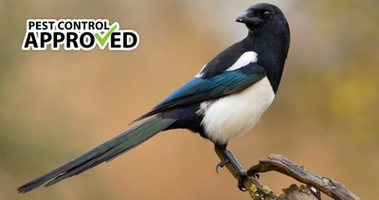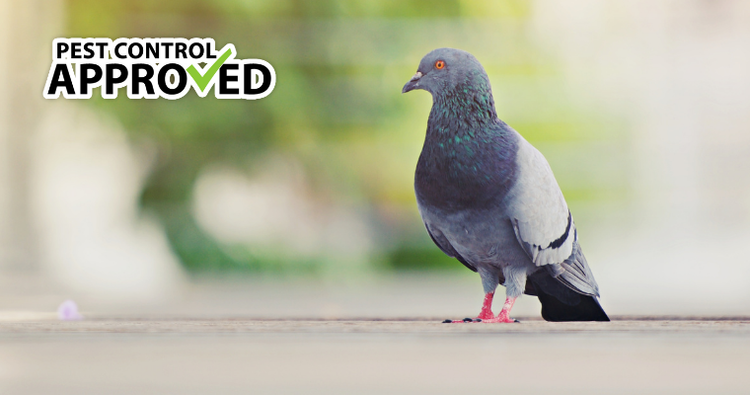
Pigeons
Pigeons are a common sight in cities around North America. These pigeons are Rock Pigeons, a feral species that originated in Europe. They were originally bred from the wild Rock Dove. These monogamous birds do not migrate and are commonly considered pests. They are difficult to remove from residential properties as they have strong homing instincts.
NAME: Rock Pigeon (Columba livia)
LOCATION: North America, England, Africa, and India
HABITAT: Rocky cliffs and mountains
DIET: Herbivore and granivore
SIZE: 32 cm to 37 cm.
PREDATORS: Peregrine falcons, sparrow hawks, crows, domestic pets
LIFE EXPECTANCY: 6 years in wild, 15 in captivity
Size
Pigeons are between the robin and the crow in size. They are 30 to 36 cm long with a wingspan of 50 to 67 cm. Their weight is between 265 and 380 grams. They are larger than their close relative, the morning dove.
Appearance
Pigeon eggs are about 2.5 cm, smaller than a chicken egg. The shell is thin and pinkish-white in color. Juvenile pigeons can be easily identified by their dull coloration. As babies, they are brown or white with wet looking feathers. Since Juvenile pigeons stay in the nest until they are nearly indistinguishable from adult, they are rarely seen.
Adult pigeons can be grey, white, tan, or black. They have a grey, lilac, or purple circular patch on their neck. The green and purple hues are often mixed with a shiny black. Their head and neck are a darker blue-grey while their tails are banded with two white stripes. Their legs are short, and their feet are red or pink. Their eyes are usually orange but can be white or grey. Pigeons have small heads, a wide round tail, and pointed, broad wings.
Diet
In the wild, pigeons feed on seeds, fruit, and the occasional bug. In cities, they often feed on bird seed, fast food, and other garbage. They prefer a grain-based diet and tend to eat bread-based fast food, which fails to provide the nutrients they need. Generally, they drink water from ponds but can consume snow when needed as a water source.
Habitat
Rock pigeons originally nested in the rocky cliffs around England. They sometimes nest in rocky ledges in North America but are more commonly seen dwelling in man-made structures. They frequent balconies and attics, often nesting there. They also nest in church steeples, underpasses, and concrete structures. Pigeons have adapted well to the urban environment and are seen more frequently in cities than in nature.
Reproduction
Pigeons have small clutches of only one to two eggs. Their eggs incubate for sixteen to nineteen days before they hatch. The chicks are fed a milk-like substance produced in the pigeon’s crop (lower esophagus). Both male and female pigeons can produce this milk. The young pigeons stay in the nest for 25 to 32 days, depending on the weather. They do not leave the nest until they are nearly fully grown. A pigeon lays eggs around 5 times per year.
Predators
While pigeons are adept flyers, they are vulnerable on the ground. Because they are often fed by humans, they tend to cluster on the ground more often than other birds. This creates a prime opportunity for predators to strike. Pigeons’ main predators are falcons and hawks. The peregrine falcon almost exclusively hunts pigeons and doves, especially in urban settings. Sparrow hawks tend to eat smaller birds but will hunt pigeons. Owls, kestrels, and seagulls will also kill pigeons. Yes, those irritating seagulls are surprisingly good hunters and will carry off a full-grown pigeon. In warmer areas, turtles and even catfish, have been known to eat a pigeon.
Domestic animals are also a threat to pigeons. Domestic cats cause thousands of bird deaths each year. While they mainly kill small birds like sparrows, they often target pigeons because of their placid nature. Some cities, like Calgary, have large feral cat populations who are often excellent hunters. The feral cats will frequently eat whatever animal they can catch, including pigeons. Less frequently, dogs may also attack and kill birds. Some dogs, like terriers, were bred to hunt birds. While dogs are not usually free roaming like cats, they will kill a pigeon if given the opportunity.
In rural settings, humans are also a thread. They may hunt and kill pigeons for food, sport, or pest removal. In most cities, killing pigeons is not illegal, but there are rules restricting how it may be done. Nonetheless, man-made items such as vehicles can also endanger pigeons.
Lifespan
In the wild, pigeons live around six years, similar to other birds. Their lifespan is significantly shorter in urban settings at around two years/ Studies have yet to determine why age faster and are overall sicklier than their rural counterparts. Smog, pesticides, and vehicles may be contributing factors. In captivity, pigeons can live up to fifteen years.


